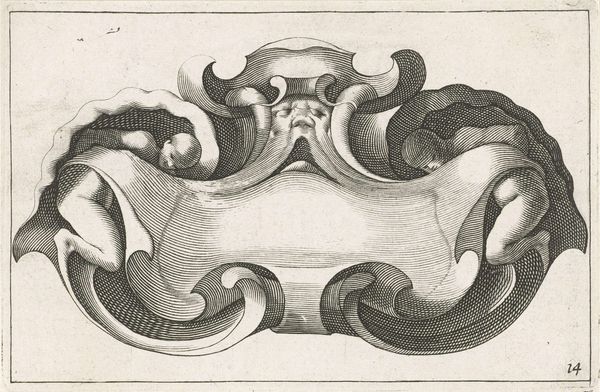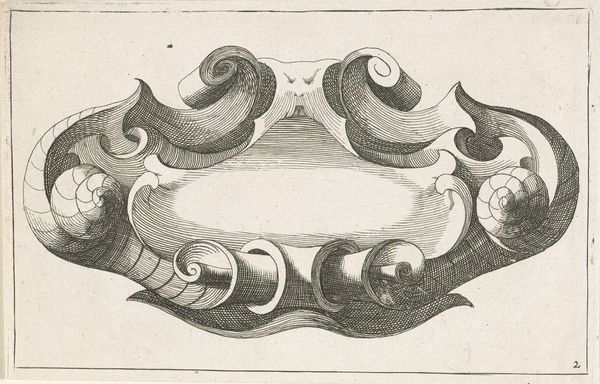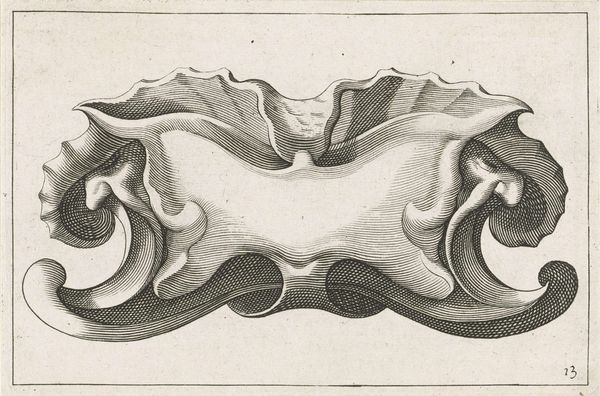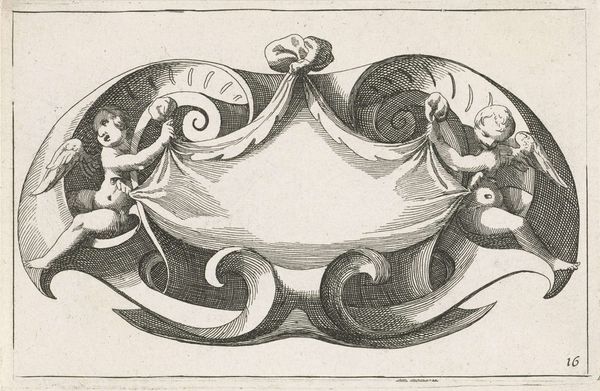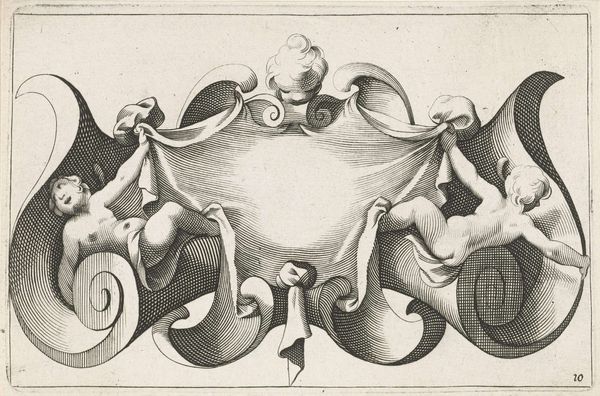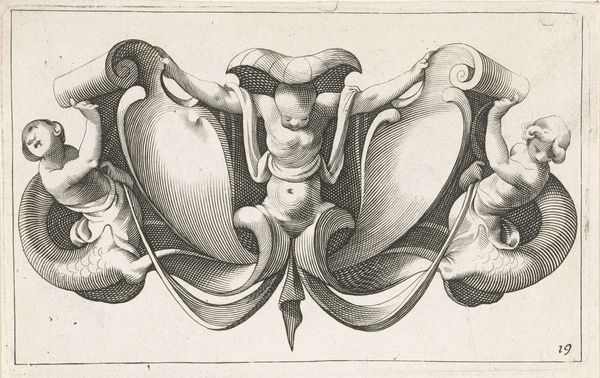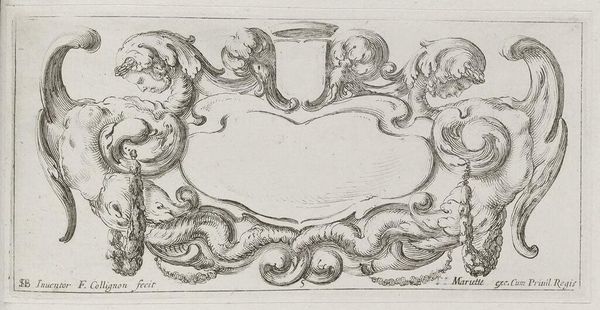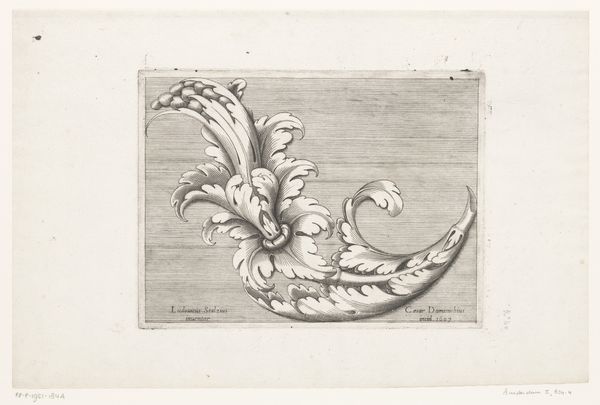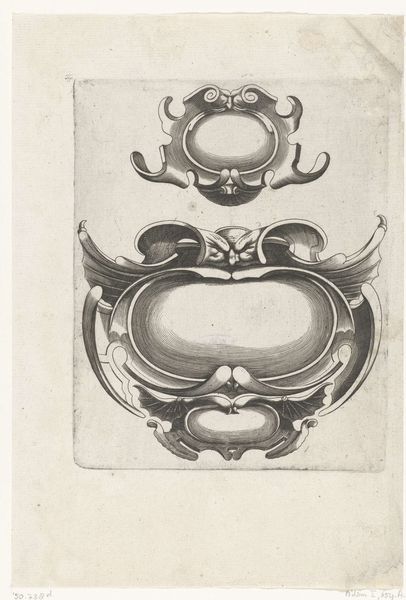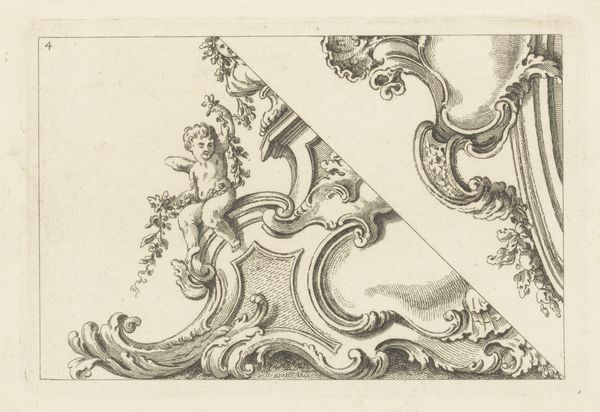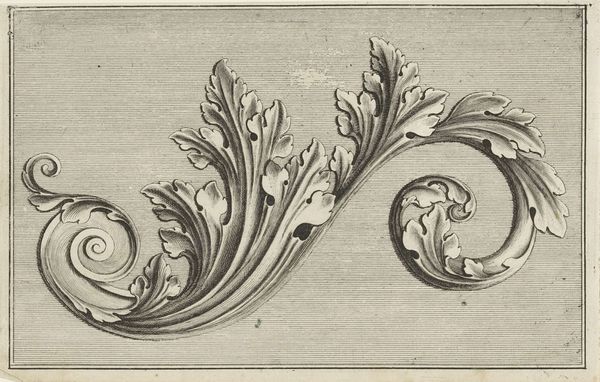
engraving
#
baroque
#
old engraving style
#
geometric
#
line
#
decorative-art
#
engraving
Dimensions: height 105 mm, width 159 mm
Copyright: Rijks Museum: Open Domain
Editor: This is "Horizontal cartouche with two male torsos," made between 1657 and 1685 by an anonymous artist. It's an engraving, so very precise lines, and… wow, it feels opulent, even excessive. What can you tell me about its purpose and place in its time? Curator: It's fascinating to consider this as a fragment, isn't it? Engravings like this weren't meant to stand alone as art, but to circulate ideas about design and ornament. The baroque emphasis on grandeur needed constant reinvention. Prints like these helped spread those new styles. Editor: So, almost like a mood board for artisans? Curator: Exactly! And think about who had access to these images. Artisans, wealthy patrons planning their estates. It’s about power and the display of wealth filtered through cultural consumption. How do you think this piece relates to power or status? Editor: The symmetrical composition and the stylized figures seem to reinforce a sense of order and control, which elites of the time were constantly trying to express. It feels deliberate, designed to project authority. Curator: Precisely. Also, think of the labour. The detailed work translated into an etching is impressive and speaks of skills and specialized workshops only some could access and afford. Editor: I never thought about design having such direct connections to politics. Curator: Baroque art served specific functions related to societal expectations, and its visual impact reflects social dynamics. Editor: I see it differently now; it's less about ornamentation and more about cultural and historical statement. Thank you! Curator: A pleasure! This shows us how art and design intersect to uphold various ideas of class.
Comments
No comments
Be the first to comment and join the conversation on the ultimate creative platform.
